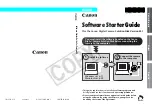
Microsoft SQL Server Database Basics
110 Agent for Microsoft SQL Server Guide
Full-Text Search Catalogs
With SQL Server 2005, Microsoft added full-text search enhancements that let
you back up and restore one or more full-text catalogs. You can now backup
catalogs with, or separate from, your database data.
A database can hold one or many full-text catalogs, but a catalog can only belong
to one database. A full-text catalog holds the full-text indexes created for one or
more tables, but a table can have only one full-text index.
Full-text catalogs are not stored in regular data files, but are still treated as files
in the database are therefore included in the database file set you can back up.
You can perform a complete (full) or a differential backup and restore of a
full-text catalog. An individual full-text index created for a particular table can be
assigned to a FileGroup and then backed up or restored as usual.
FILESTREAM Data
In SQL Server 2008, Microsoft introduced Filestream storage. Filestream data
are often very large and unstructured objects that typically reside outside of a
database, such as text documents, images, videos or music files. In SQL Server
2008, Filestream data is stored in separate FileGroups that contain only file
system directories instead of the Filestream objects themselves.
Note:
Large FILESTREAM collections may take significant amounts of time to
estimate, causing property list generation to be slow.
















































